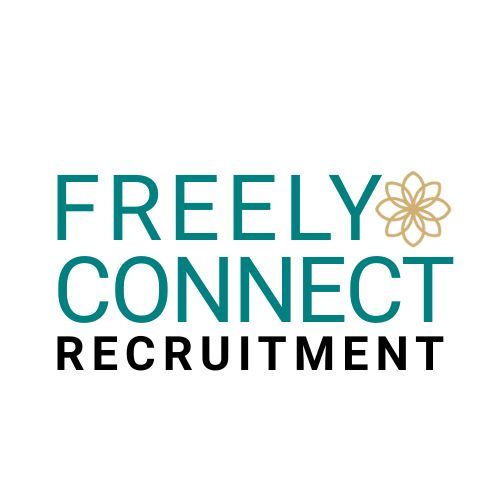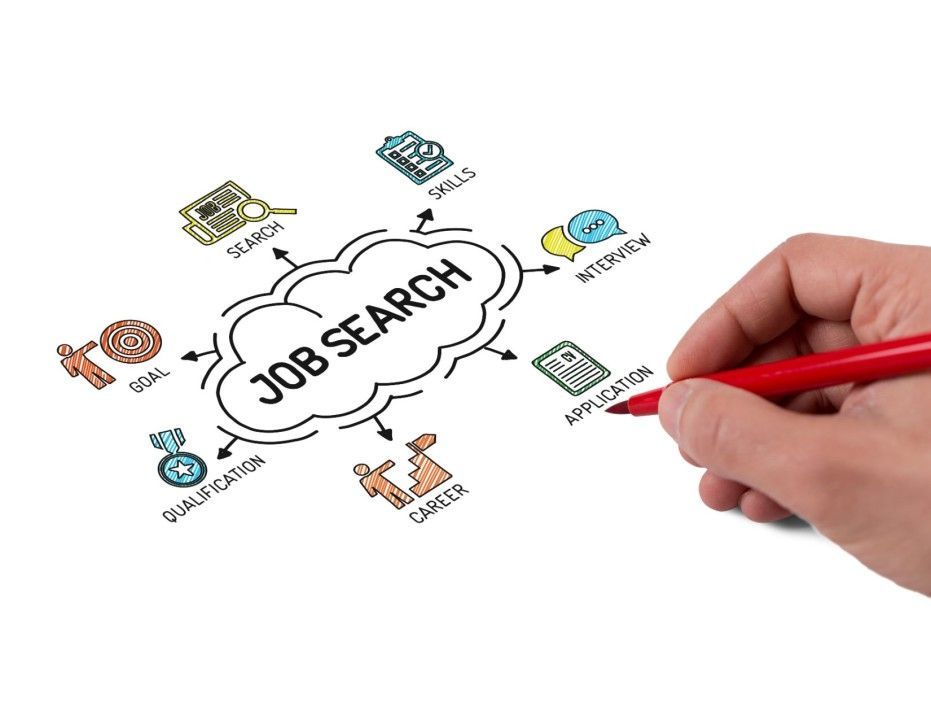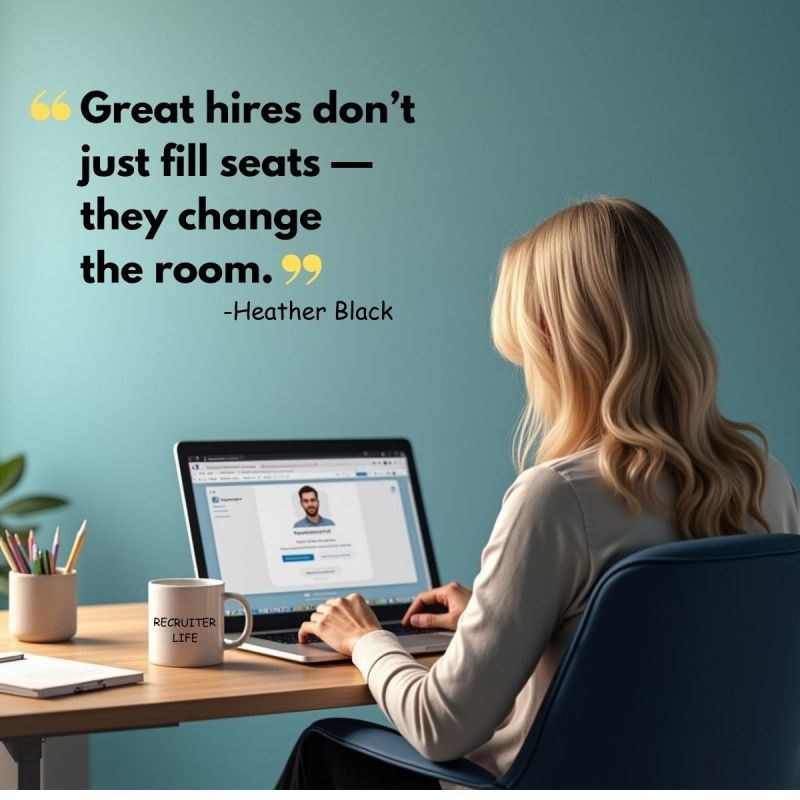
"That’s One of Mine!" After over 5 years in recruitment, there’s a moment I’ve come to love. I’ll be walking through a client’s office, chatting with someone in a meeting, or reading a team newsletter, and suddenly I’ll spot someone I placed, thriving. And I’ll smile and think, “That’s one of mine.” It never gets old. When a hire really works, you can feel it. The candidate is energized, the team clicks, and the company moves forward. It’s matchmaking, career chemistry, and good business all rolled into one. But not every match works. And when it doesn’t, it’s rarely because the candidate wasn’t strong. It’s usually because something didn’t line up. Sometimes the job changes after the offer. Sometimes the culture that was pitched doesn’t match the reality. On one occasion, I was helping a client hire a Plant Manager, only to find out later they gave the person the title of Director of Operations. The expectations were completely off, and unsurprisingly, it didn’t work out. (Yes, that actually happened.) And while I believe people can grow into stretch roles, there has to be alignment. If not, it sets people up for failure. And I get the call six months later that starts with, “Hey Heather, got a sec?” Now let’s talk about diversity. Many companies say they value it. But if a great candidate is rejected because they “might not fit the culture,” what does that really mean? If everyone is the same, how does a company grow? I’ve seen companies get this right. One of my large-format clients hires people with different backgrounds, supports language diversity, and has a leadership team that truly values its people. They don’t just talk about culture. They live it. Their retention is strong, and their team is thriving. On the other hand, I hear from employees at a large packaging company where micromanagement is the norm and leadership is known for a “my way or the highway” approach. I don’t need a review site to know what’s going on. Their people tell me directly. Let’s touch on sales. If you want someone earning $200K to join your team for $60K and a basic commission plan, you're going to have a hard time. High-performers move for a reason. They want challenge, innovation, strong culture, equity, or leadership that gets it. Why should they take the risk and leave where they are to join your company? How will you make it worth it? That said, I’ve seen companies take smart risks. One client hired a salesperson from an adjacent industry. New perspective, fresh energy, and it worked. What I know is this: the best companies are clear and consistent. They don’t oversell, they follow through, and they know that finding the right fit goes both ways. And I work hard to match people with the roles that fit them. Because when it works, it really works. And I get to say, “That’s one of mine.”
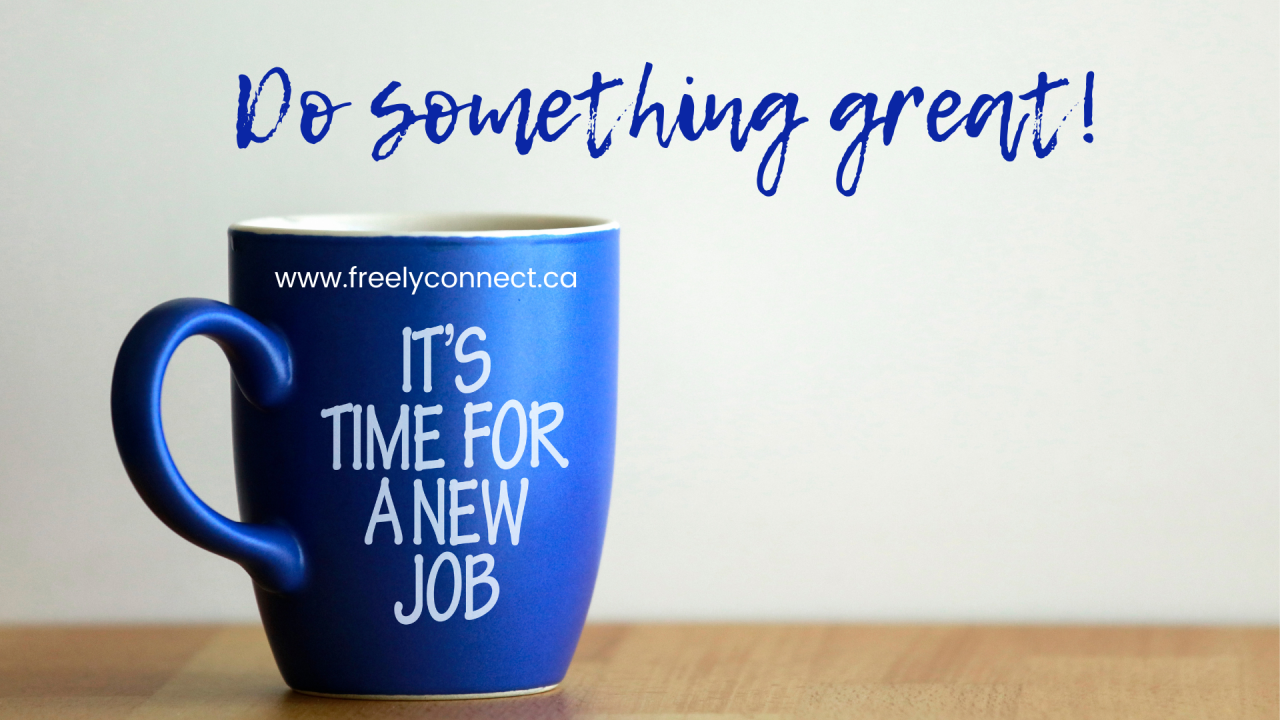
This month, we're tackling three key areas of your job search: mastering the interview process, researching potential employers, and negotiating your offer. Whether you're gearing up for your next big interview or considering a job offer, these tips will help you make smart decisions and take your career to the next level. Mastering the Interview Process 1. Practice, Practice, Practice: Preparation is everything. Use LinkedIn's AI-powered Interview Prep Tool to get familiar with common interview questions and sample answers. Record your responses, get feedback, and refine your approach. For extra practice, check out Google's Interview Warmup . It’s a great way to sharpen your skills and get ready for anything that might come your way. 2. Master Your Story: Make sure you have a clear, concise narrative that ties together your experience, skills, and career goals. The STAR method (Situation, Task, Action, Result) is your friend here. It helps you frame your responses to behavioral questions, making it easy to showcase your value. 3. Prepare Questions for Your Interviewer: Remember, an interview is a two-way street. Come prepared with thoughtful questions about the company’s culture, growth opportunities, and role expectations. This not only shows you're interested but also helps you figure out if the company is the right fit for you. Know Your Potential Employer 1. Do Your Homework: Think of choosing a prospective employer like choosing a long-term partner. You wouldn’t move in with someone you barely know, right? Dive deep into your research using LinkedIn and Glassdoor to understand the company’s culture, employee satisfaction, and leadership. 2. Align Your Values: Take a close look at the company’s mission, values, and culture. Do they match up with what you’re looking for? Check out their recent news, products, and services to get a feel for their business. This insight is crucial not just for the interview but for deciding if this is the place where you want to grow your career. 3. Leverage Your Network: Tap into your LinkedIn connections or reach out to current and former employees for their take on the company. Informational interviews can offer a wealth of information that you won’t find online, giving you an insider’s view of what it’s really like to work there. Negotiating Your Offer 1. Know Your Worth: Before you start negotiating, make sure you know what the industry standards and market value are for your role and location. Sites like Glassdoor and Payscale can give you a clear picture of what to expect, helping you approach negotiations with confidence. 2. Beyond Salary: Don’t just focus on the paycheck. Consider other important factors like autonomy, flexibility, and recognition. What’s the company’s stance on work-life balance? Do they offer remote or hybrid options? These are just as crucial as salary when it comes to your overall job satisfaction. 3. Ask About Growth Opportunities: Career growth is key. Make sure to ask about training, skill development, and advancement opportunities. Find out if the employer is committed to helping you grow in your career. 4. Get Clarity on Benefits: Understand the full benefits package before you sign anything. What are their policies on vacation, health insurance, and retirement plans? Do they offer support for mental health or other wellness programs? Getting clarity here can make a big difference in your decision. 5. Be Ready to Walk Away: Remember, it’s okay to walk away if the offer doesn’t meet your needs. Know your non-negotiables going in, and don’t be afraid to say no if the offer isn’t right. Final Thoughts: Nailing the interview, understanding your potential employer, and negotiating your offer are all essential steps to landing a job that’s not just a good fit now but also supports your long-term career goals. Follow these tips, and you’ll be well-prepared to navigate the competitive job market and make informed decisions about your future. Best of luck in your career journey!

Why Employer Branding Can't Be an Afterthought in Today's Talent Market When it comes to selling capabilities, turnaround times, and quality - the print industry knows how to show up. Printing and packaging companies are proud to share their new press investments, facility upgrades, and customer wins. But when it comes to attracting talent? Most are still relying on hiring processes that feel like they were written in 2005. Here's the reality: the best candidates are doing their research before they ever apply to your open roles. If your online presence doesn't tell them why they should want to work for you, you're losing them before the conversation even starts. And in a tight talent market - especially one where skilled workers and manufacturing experience are in short supply - that's not a risk you can afford to take. What Candidates Are Looking For (That You Might Not Be Showing Them) Today's job seekers want more than just a pay cheque. They're looking for: A sense of purpose - Who are you as a company? What do you stand for? How does your work make a difference? A culture that fits - Will I be respected? Supported? Included? Do you actually walk the talk? Opportunities to grow - Will I be stuck in a role, or can I build a career here? Are you investing in my future? Work-life balance - Does your leadership team "get it," or are they stuck in the old-school "work till you drop" mentality? Which by the way is not sustainable! You might be offering all of this - but if it's not visible, it doesn't count. Period. Here's What You Can Do (Without Hiring a Branding Agency) Refresh your job postings Cut the generic "competitive salary and benefits" lines. In 2025, salary transparency isn't just preferred, it's expected. Post your actual salary ranges. Tell candidates what makes your company different. Speak to the real people reading your ad instead of trying to check a bunch of HR boxes. Update your careers page Include photos of your actual team (not stock photos!). Add a short message from leadership. Share a quote or two about why people stay. Real, human content builds trust. Get visible on LinkedIn Not just for your company page but through your leaders. A quick post about a team win, an employee anniversary, or how you're growing the business gives people a glimpse behind the curtain. And please, stop with the corporate-speak. Talk like a human! Showcase your flexibility options The 2025 workforce expects some form of flexibility. Even in production environments, are you offering creative scheduling, compressed workweeks, or other options that acknowledge people have lives outside work? Make sure candidates know. Train your hiring managers The interview is no longer just about candidates proving themselves - it's about your team showing candidates why they should say yes. Make sure your managers are equipped to sell the opportunity, not just evaluate talent. And for goodness sake, get back to candidates quickly! Ghosting applicants is the fastest way to trash your employer brand. You Don't Have to Be Trendy - Just Transparent Not every company is a startup with ping pong tables and kombucha taps (and most people in print would roll their eyes at that anyway). But candidates are craving authenticity. They want to know what it's really like to work with you. So talk about your values. Share what a day on the floor looks like. Highlight the people who make your business run. Own up to your challenges and how you're addressing them. That's what sells today. In an industry that's literally built on communication, your hiring approach should communicate just as effectively as your marketing materials. Otherwise, don't be surprised when top talent keeps passing you by for companies that get it. Need help making your employer brand work harder for you? I work with companies across Canada to help them hire smarter - and build teams people want to be part of. Let's chat!
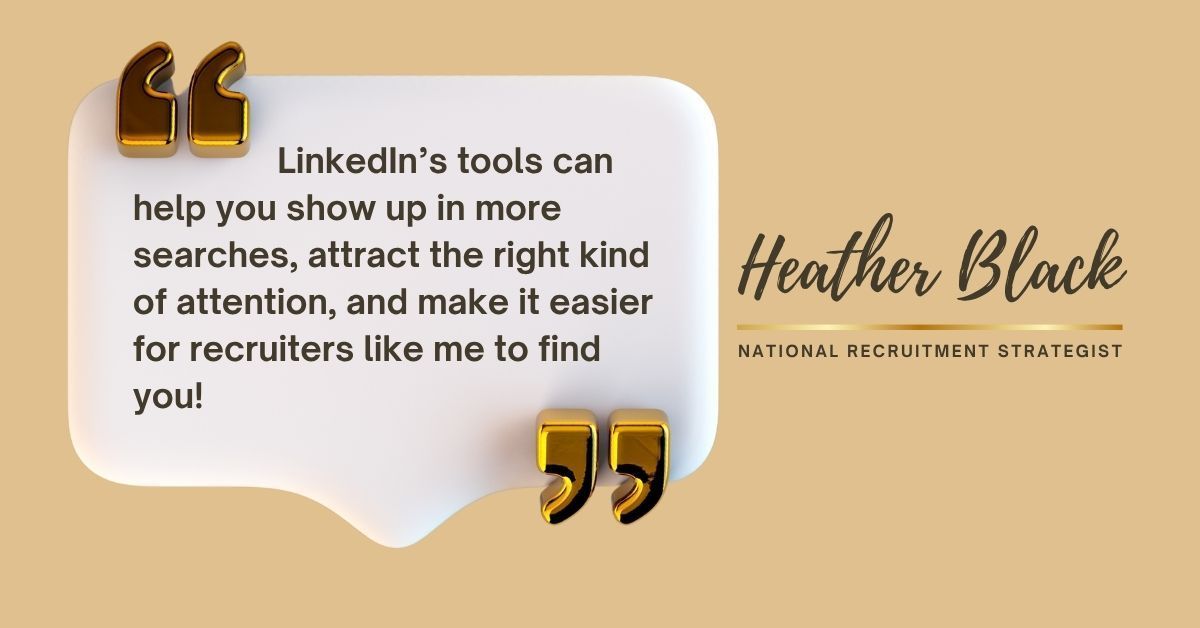
(Free Features, Premium Perks, and What's Coming Soon) LinkedIn has evolved beyond just a place to post your resume. Whether you're actively searching or casually browsing, there are built-in tools to help you get noticed and stay ahead. Many of these are free, and some come with extra perks if you have Premium. Plus, for those of us in Canada, there are exciting features on the horizon. 1. Job Match Insights This feature provides a quick snapshot of how your profile aligns with a job posting, highlighting your title, skills, and education. How to use it: • Navigate to the Jobs tab • Select a job of interest • Scroll to the “How you match” section Free users see: Basic comparisons between your profile and the job description. Premium users get: Detailed feedback, suggestions to enhance your profile, and insights into how you compare with other applicants. Why it helps: It quickly shows if you're a strong fit and where you might need to tweak your profile or resume. 2. Job Alerts and Saved Searches Set alerts for roles you're interested in, so new postings come directly to you. How to use it: • Go to the Jobs tab • Use filters to search by title, location, or company • Click “Set alert” at the top of the results Free for everyone Premium users get: Additional filters and the ability to see who viewed their profile. Why it helps: Being among the first applicants can improve your chances. 3. Profile Suggestions and Edits LinkedIn prompts you to make small profile improvements, especially if you've marked yourself as “Open to Work.” How to use it: • Visit your profile • Look for suggestions like “Improve your headline” or “Add a skill” Free users get: Basic improvement suggestions based on your activity and goals. Premium users get: Deeper AI-generated rewrites and keyword suggestions based on current hiring trends. Why it helps: Even minor updates can boost your visibility in recruiter searches. Coming Soon to Canada: New LinkedIn Tools LinkedIn is testing several new features in the U.S., with plans to expand to Canada later this year. AI Career Coach - AI assistant that helps with resume content, cover letters, and career planning. Currently available to select Premium users in the U.S., with a full rollout expected by the end of 2025. AI-Enhanced Job Matching - An advanced version of “How you match” that uses AI to recommend changes to your profile and offers deeper insight into your fit for a role. Currently live in some U.S. accounts, with international rollout in progress. Profile Video (Cover Story) - Allows you to record or upload a short video introduction tied to your profile photo. Still in limited release, with wider availability expected this year. These updates aim to help job seekers get noticed faster and tell their story more clearly. I'll share more when they're available in Canada. Final Thought If you're actively looking or even just exploring what's next, there's a lot you can do to get noticed without spending a thing. LinkedIn’s free tools can help you show up in more searches, attract the right kind of attention, and make it easier for recruiters like me to find you! Need a second opinion on your profile or assistance with these features? I'm always happy to take a look. Oh, and one last thing! If you see a print or packaging job that grabs your attention, reach out to me before applying. If it’s a match and you haven’t already applied, I might be able to get your name in front of the right person. A warm intro beats the black hole of online applications any day!

I once left one of my favorite jobs. Not because of the role. Not because of the company. Not because I wasn’t committed. I left because of one person. Over seven years, I had five different managers. Most were decent. One was exceptional. The last? A full-blown micromanager. He held weekly 1:1 update meetings. Let’s be honest, they were really “idea extraction” sessions. He talked non-stop, mined my brain for insights, and then repackaged them as his own to leadership. He blocked my access to the top, made sure everything funneled through him, and tried to pass off control as communication by constantly oversharing. It got so bad I would sit in my car in the parking lot, shaking and dreading walking in. I went to HR. Not to file a complaint, just to ask for support. They nodded and listened, but there wasn’t anything they could do. So, I quit. And guess what? He was let go four months later. But the damage was done. I had already walked away from a job I truly loved. Lesson: People don’t quit jobs. They quit poor leadership. Here’s what the data says: 70% of employees say micromanagement kills morale 58% leave due to toxic cultures 65% resign because of burnout 75% of voluntary turnover is manager-related (Sources: LinkedIn 2024 Survey / Gallup) Micromanagement isn’t just a style. It’s a retention issue. My advice: If you’re managing people, take a moment to reflect: Are you leading or controlling? Are you building trust or getting in the way? Are your 1:1s helpful check-ins or just status reports? Are you truly open to feedback or just going through the motions? And if you’re on the receiving end of this: · Document the patterns · Set boundaries · Ask for support once, maybe twice · Then start planning your exit Your mental health isn’t worth someone else’s insecurities. If any of this hit a nerve, you’re not alone. You don’t have to stick it out or wait for things to magically improve. You deserve a workplace where you’re trusted, supported, and empowered. Not drained, silenced, or dismissed. And if you’re in a leadership role, keep this in mind. If you’re not paying attention, your best people might already be planning their exit. Quietly. Whether you’re trying to keep top talent or find a better fit, I’ve seen both sides. Let’s talk.
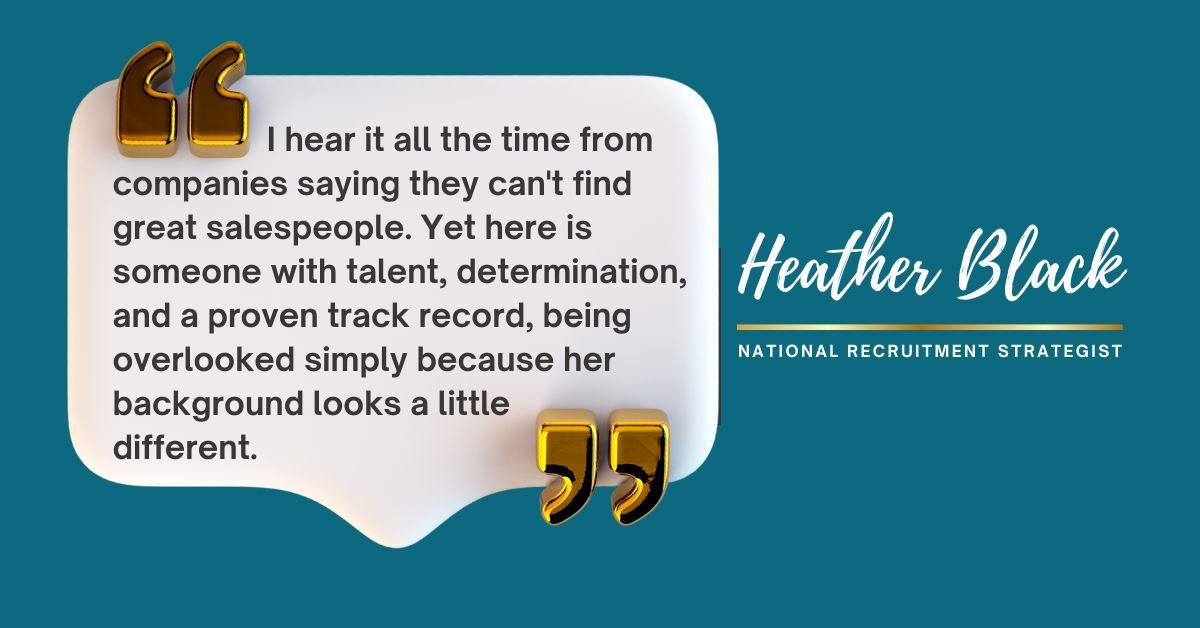
We all come from somewhere. Some of us grew up in family-run print shops, learning the trade from the floor up. Others built careers across borders, navigating different markets, learning fast, and forging relationships with some of the most respected publishing companies in the world. One of those people is a sales professional I’m working with right now. She built her career in the global book printing industry, consistently surpassing expectations and forming strong client partnerships. She knows how to sell value, manage demanding timelines, and drive real growth. Now she’s here in Canada. She recently upgraded her skills to better understand the Canadian business environment and is ready to bring that same energy and expertise to a new team. The challenge? Her experience wasn’t built here, and that seems to give some employers pause. I hear it all the time from companies saying they can't find great salespeople. Yet here is someone with talent, determination, and a proven track record, being overlooked simply because her background looks a little different. We all needed someone to believe in us at some point. In this case, it’s also an opportunity to hire a proven performer who’s ready to make an impact. If you're looking for a motivated, knowledgeable, and relationship-driven sales professional, reach out. She is ready to contribute.
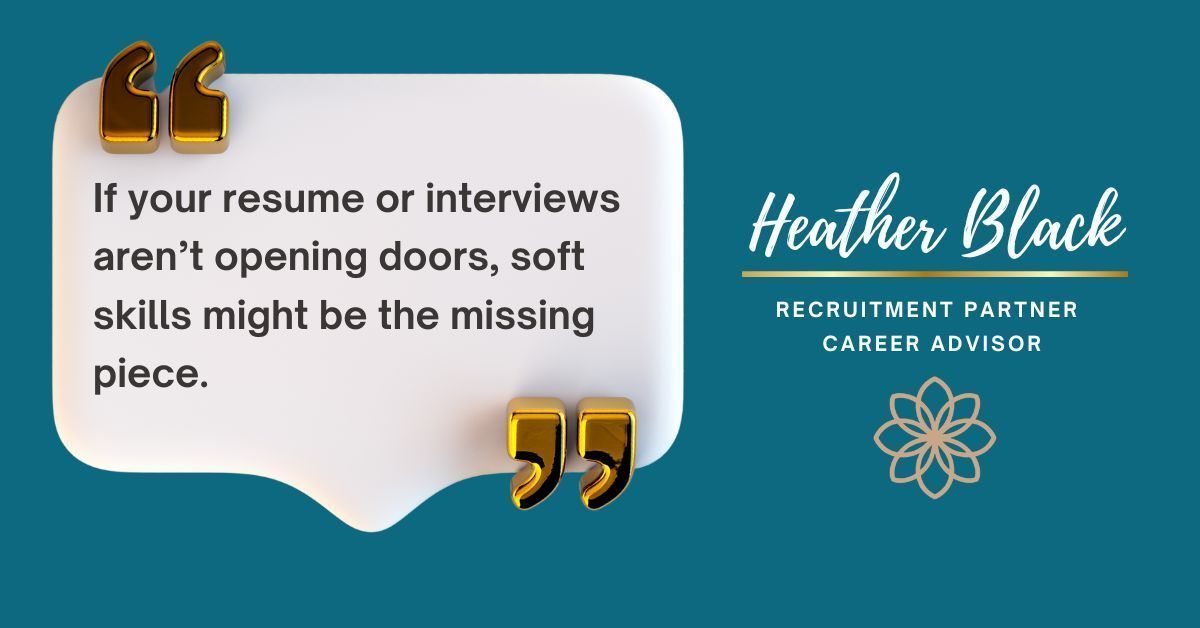
My candidate nailed every technical requirement and still didn’t get the job. What was missing? Soft skills. A few weeks ago, I was working with a hiring manager reviewing candidates for a senior role. One person stood out on paper. They had deep industry experience, they were a great technical match, and they came from a top competitor. But in the interviews? No curiosity. No follow-up questions. No real effort to understand the team or the business. Just rehearsed lines and safe answers. I sent my client another candidate with a bit less experience. This person asked thoughtful questions, shared examples of navigating messy change and tough conversations, and tied what they heard in the interview to how they would lead if hired. They got the job. Here’s the truth I see every day: it’s not just about what you’ve done. It’s about how you show up, how you communicate, and how you work with others. Let’s talk about soft skills. They are the foundation of leadership and the starting point for anyone who wants to lead. Here are a few I see hiring managers prioritize right now: · Curiosity · Self-awareness · Emotional intelligence · Clear communication (especially under pressure) · Decisiveness, paired with humility · Coaching and mentoring ability · Adaptability in messy or shifting environments · Influence without ego These are not things you just list on a resume. They need to show up in how you talk about your work. Which brings me to this: if you’re trying to communicate soft skills in your resume, don’t just include them in a list of adjectives at the top. Show them in your bullet points. Here are some examples: · Built trust with a newly assigned cross-functional team, improving collaboration and reducing project turnaround time by 30% within 3 months. (Emphasizes relationship building, team alignment, and communication) · Facilitated weekly 1:1s and team huddles that increased employee engagement scores by 22% and reduced turnover by half over one fiscal year. (Highlights emotional intelligence, communication, and team development) · Navigated conflicting stakeholder priorities by mediating tough conversations and aligning expectations, resulting in a 25% increase in on-time project delivery. (Showcases conflict resolution, diplomacy, and strategic communication) Bottom line: if your resume or interviews aren’t opening doors, soft skills might be the missing piece. If you want to stand out, don’t just talk about what you’ve done. Show how you work with people. That’s what hiring managers are looking for.

AI-powered resume writing is a hot topic on LinkedIn right now, and I love that people are exploring its potential. AI can be an amazing brainstorming tool, helping job seekers refine their resumes, sharpen bullet points, and optimize for key terms. As a recruiter and career coach who works closely with candidates to craft compelling resumes, I have to say that it’s not as simple as some make it out to be. Here are some real pitfalls to be aware of and ways to navigate them: AI can sometimes embellish too much. I’ve seen AI tools generate resumes that exaggerate a candidate’s experience, sometimes to the point of misrepresentation. Optimization is important, but honesty matters more. Start with your own content. Write out your responsibilities, achievements, and skills first. Then, use AI to refine and polish, not fabricate. Keyword stuffing doesn’t equal accuracy. Many job seekers use ChatGPT to paste a job description and their resume, then prompt AI to optimize it with keywords. The problem is that the generated content may not reflect actual skills or experience. If you land an interview but can’t back up what’s on your resume, that’s a major issue. To avoid this, don’t rely on AI to auto-fill keywords. Always double-check that everything aligns with your experience. Professional summaries need a human touch. AI-generated summaries often go on too long, include personal pronouns, or are filled with fluff that doesn’t add value. A strong summary should be sharp, engaging, and to the point. I suggest teaching AI what you want. Ask for a concise, professional summary that showcases your value, leaving out unnecessary filler. Bullet points should highlight real accomplishments. AI can generate job duty-based bullet points, but it doesn’t always capture what makes you stand out. Hiring managers want to understand your value. Make sure you edit every bullet manually and that each one highlights specific accomplishments and, where possible, includes metrics. AI doesn’t always get resume length and readability right. Sometimes AI generates wordy, jargon-filled statements that don’t read naturally. Resumes need to be clear and concise because hiring managers don’t have time to sift through fluff. Using AI to help structure your resume is fine but make sure you go through it and tighten up the language. Keep it easy to read and to the point. AI is an incredible tool, but its real value comes from using it as a brainstorming partner rather than relying on it completely. As a recruiter, I can always tell the difference between an AI-generated resume and one that’s been thoughtfully crafted. It’s a helpful resource, but not something you should rely on without a lot of review and fine-tuning. Previously posted by Heather Black on LinkedIn - January 29, 2025
